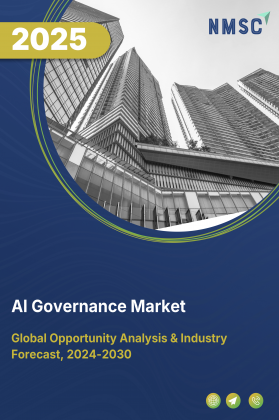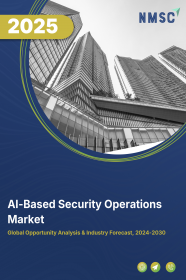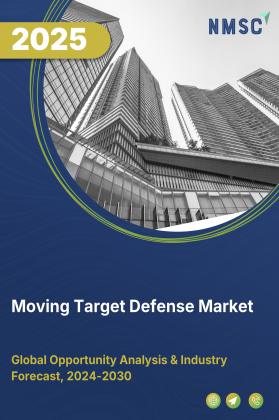
Moving Target Defense Market by Deployment (On-Premises, Cloud / SaaS, Managed Services / Outsourced MTD Delivery), By Technology (Stand-alone MTD Solutions, Embedded/Integrated with EDR/XDR or Security Suite, Platform / Ecosystem), By Solution (Network-based MTD, Host/Endpoint-based MTD and Others), By End User (Large Enterprises, Small & Medium Enterprises and Others), By Industry Vertical (Banking, Financial Services & Insurance and Others) – Global Analysis & Forecast, 2025–2030
Industry Outlook
The global Moving Target Defense Market size was valued at USD 219.5 million in 2024, and is expected to be valued at USD 267.3 million by the end of 2025. The industry is projected to grow, hitting USD 716.1 million by 2030, with a CAGR of 21.79% between 2025 and 2030.
The moving target defense (MTD) market is witnessing rapid growth driven by the increasing sophistication of cyber threats targeting critical infrastructure, government systems, and enterprises. Advanced MTD technologies, including dynamic system reconfiguration and adaptive defenses, make IT environments less predictable and harder to compromise, enabling organizations to proactively reduce vulnerabilities. By continuously shifting the attack surface, these solutions enhance resilience and encourage broader adoption of adaptive cybersecurity strategies across multiple sectors.
At the same time, governmental initiatives and strategic programs are supporting the adoption of MTD solutions by establishing frameworks, promoting secure and interoperable technologies, and encouraging investment in adaptive defense capabilities. Together, innovation and policy support are expanding applications, driving market growth, and strengthening the competitive landscape for MTD technologies globally.
What are the key trends in moving target defense industry?
How is moving target defense market being institutionalized through standards and governance?
The moving target defense (MTD) market has evolved from a niche research concept into a recognized component of mainstream cybersecurity frameworks. NIST’s CSF 2.0 (Feb 2024) now emphasizes adaptive controls and real-time information flows, validating MTD approaches that dynamically change system states or topology to reduce attacker dwell time. This shift signals that organizations increasingly demand measurable, program-level outcomes rather than standalone solutions. For the MTD market, this creates an opportunity: vendors that align their offerings with CSF outcomes and provide KPIs such as mean time to re-randomize or probe-resilience metrics accelerate adoption and procurement. Treating MTD as a Zero-Trust or compliance-aligned building block, rather than a one-off tool, helps vendors position products as auditable, budgetable, and integral to enterprise cybersecurity strategies.
How is automation enhancing the effectiveness of moving target defense?
The moving target defense (MTD) market is increasingly embracing automation to enhance efficiency and reduce response times. A 2024 report by the U.S. Department of Defense highlights that automation and orchestration are core components of Zero Trust architectures, enabling rapid, scalable security actions based on predefined policies. For the MTD market, this means that solutions incorporating automated reconfiguration, threat detection, and adaptive responses are becoming more attractive to enterprises and government agencies. Vendors that integrate these automated capabilities better meet growing demand for dynamic, real-time cybersecurity solutions and position their offerings as essential tools in modern, risk-aware IT environments.
The widespread global adoption of AI, as shown by the high rates in the U.S. (45%), UK (41%), and other major economies, significantly accelerates the moving target defense market growth because it simultaneously escalates the cyber threat landscape and enhances MTD's capabilities. This adoption fuels sophisticated, AI-powered cyberattacks that easily bypass static defenses, creating a pressing need for dynamic security solutions like MTD; concurrently, AI technologies provide the advanced automation and analytics necessary to power effective MTD systems, making them more intelligent, adaptive, and feasible to deploy at scale.
What are the key market drivers, breakthroughs, and investment opportunities that will shape the moving target defense industry in next decade?
The global moving target defense (MTD) market is experiencing strong growth, driven by the increasing sophistication and frequency of cyber threats targeting critical infrastructure, government systems, and enterprises. Advanced MTD technologies, such as dynamic system reconfiguration, self-updating kernels, and shifting network parameters, make IT environments less predictable and harder to compromise, enabling organizations to proactively reduce vulnerabilities. By continuously altering the attack surface, these solutions enhance resilience and foster the adoption of adaptive cybersecurity strategies across defense, critical infrastructure, and enterprise sectors.
Government initiatives and strategic programs worldwide are further accelerating MTD adoption by promoting the development of secure, interoperable, and standardized frameworks. These efforts, combined with technological innovation and cross-industry collaboration, are expanding applications in network security, endpoint protection, and cyber-physical systems. Together, these factors are driving market growth, encouraging investment, and establishing MTD technologies as essential components of future-ready, resilient cybersecurity strategies.
Growth Drivers:
How Are Escalating Cyber Threats Driving Growth in the Moving Target Defense Market?
The U.S. Intelligence Community's 2025 Annual Threat Assessment highlights a growing range of cyber threats targeting U.S. citizens, critical infrastructure, and government systems, emphasizing the urgent need for advanced cybersecurity solutions. In response, the Department of Homeland Security’s Moving Target Defense (MTD) Program is actively developing technologies such as self-cleaning servers, active kernel updates, and dynamic IP address hopping to continuously shift the attack surface. By making systems less predictable and harder to compromise, MTD solutions are driving growth in the cybersecurity market, particularly within critical infrastructure and defense sectors, highlighting the rising demand for adaptive, resilient cyber defenses.
How Are Rising Government Investments Boosting the Moving Target Defense Market Demand?
Governments worldwide are ramping up investments in cybersecurity infrastructure to strengthen national defense and protect critical systems. In the U.S., the Department of Homeland Security (DHS) has directed substantial funding toward enhancing cybersecurity capabilities at state, local, tribal, and territorial levels. Under the Bipartisan Infrastructure Law (BIL), USD 300 million was allocated in Fiscal Year 2024, followed by an additional USD 100 million in FY 2025 for cybersecurity grants. These initiatives are accelerating the adoption of advanced solutions like moving target defense (MTD), which dynamically shifts system configurations to reduce vulnerability and enhance resilience. As governments integrate MTD into their cybersecurity strategies, the market for such adaptive defense technologies is expanding rapidly, driven by the increasing emphasis on protecting critical infrastructure against sophisticated cyber threats.
Growth Inhibitors:
How Does Technical Complexity and Operational Overhead Restrain the Moving Target Defense Market Expansion?
A major factor limiting the growth of the moving target defense (MTD) market is the technical complexity and operational overhead associated with implementing these solutions. Deploying MTD strategies requires significant modifications to existing IT and network infrastructures, which increase resource consumption and risk temporary service disruptions. Applying MTD across cyber, physical, and human layers enhances security but also adds challenges in system integration, monitoring, and management. These complexities make organizations hesitant to adopt MTD technologies, particularly when weighing the benefits of improved security against the potential impact on operational efficiency, thereby slowing the market’s overall growth.
How Is Government Support Creating Growth Opportunities in the Moving Target Defense Market?
The U.S. Department of Homeland Security’s Cybersecurity and Infrastructure Security Agency (CISA) are actively supporting the advancement of moving target defense (MTD) technologies, promoting dynamic defense strategies that continuously shift the attack surface to thwart cyber threats. This strong government backing creates a significant growth opportunity for the MTD market, as organizations—especially in critical infrastructure, defense, and government sectors—are incentivized to adopt these adaptive cybersecurity solutions. The initiatives not only encourage wider deployment of MTD systems but also drive innovation and investment in the market, positioning MTD technologies as a key component of future-ready, resilient cybersecurity strategies.
How is the moving target defense market share is segmented in this report, and what are the key insights from segmentation analysis?
By Deployment Insights
How is the Moving Target Defense Market Shaped by Deployment?
Based on deployment, the market is segmented into on-premises, cloud/SaaS and Others.
The on-premises deployment segment of the moving target defense (MTD) market involves installing and managing MTD solutions directly within an organization’s own IT infrastructure. This approach provides organizations with full control over their security environment, allowing for customization to meet specific operational and compliance requirements. On-premises MTD solutions are particularly preferred by enterprises handling highly sensitive data, such as defense contractors, financial institutions, and critical infrastructure operators, where strict data privacy and regulatory compliance are paramount. Although this deployment model requires higher upfront investment and dedicated IT resources for management and maintenance, it offers organizations enhanced control, visibility, and integration capabilities, making it a vital segment of the market.
By Technology Insights
Which technology is emerging as the most flexible in the Moving Target Defense Market?
Based on technology, the market is segmented into stand-alone MTD solutions and others.
The stand-alone MTD solutions segment refers to dedicated moving target defense technologies deployed independently of other cybersecurity systems. These solutions are designed specifically to implement dynamic defense mechanisms, such as IP address hopping, system configuration changes, and randomized network structures, without relying on integration with broader security platforms. Stand-alone MTD offerings are particularly attractive to organizations seeking highly specialized, flexible, and focused defense capabilities, allowing them to tailor protection strategies according to unique operational needs. While they require additional management effort compared to integrated solutions, their dedicated nature ensures maximum adaptability and targeted security, making this segment a key driver in the MTD market.
By Solution Insights
How is the Moving Target Defense Market shaped by solution segmentation?
Based on solution, the market is segmented into network based MTD, host/endpoint based MTD and others.
The network-based moving target defense (MTD) segment focuses on securing organizational networks by dynamically changing network-level parameters to reduce the predictability and exploitability of attack surfaces. Techniques in this segment include IP address randomization, dynamic routing, network topology shuffling, and adaptive traffic patterns, which collectively make it more difficult for cyber attackers to identify and target critical assets. Network-based MTD is particularly valuable for large enterprises, data centers, and critical infrastructure operators where network-level attacks such as Distributed Denial of Service (DDoS) or reconnaissance are common. By continuously altering network characteristics, this solution enhances resilience, minimizes exposure to attacks, and represents a foundational segment in the overall MTD market.
By End User Insights
How are end use industry driving the Moving Target Defense Market?
Based on end user, the market is segmented into large enterprises, small & medium enterprises and others.
The large enterprises segment in the moving target defense market includes multinational corporations and organizations with extensive IT infrastructures and complex cybersecurity requirements. These enterprises face sophisticated cyber threats targeting critical business operations, intellectual property, and customer data. MTD solutions for large enterprises are deployed to dynamically shift attack surfaces, implement adaptive defense mechanisms, and enhance overall network resilience. Due to their scale, large enterprises typically invest in customized, multi-layered MTD strategies that integrate with existing security frameworks while maintaining compliance with stringent regulatory standards. This segment represents a significant portion of the market, driven by the need for robust, proactive cybersecurity solutions to protect high-value digital assets.
This chart represents the distribution of the market by end user, showing how adoption of MTD solutions is spread across different organizational segments. It highlights that large enterprises are the primary adopters, reflecting their higher cybersecurity budgets and greater exposure to sophisticated threats. The government and public sector also accounts for a significant share, driven by the need to protect critical infrastructure and sensitive data. Small and medium enterprises (SMEs) and the industrial/manufacturing sector hold smaller portions, indicating emerging opportunities as these segments increasingly recognize the value of adaptive cybersecurity. Overall, the chart illustrates which end users are leading MTD adoption and where future market growth is likely to occur
Regional Outlook
The market is geographically studied across North America, Europe, Asia Pacific, Latin America and the Middle East & Africa and each region is further studied across countries.
Moving Target Defense Market in North America
North America is witnessing strong growth in the moving defense target market due to rising demand for advanced cybersecurity, military defense systems, and adaptive threat mitigation solutions. Increasing threats from cyberattacks, ransomware, and sophisticated intrusion techniques are driving adoption of dynamic defense mechanisms. Organizations across government, defense, and critical infrastructure sectors are deploying moving defense targets to proactively detect, deceive, and mitigate evolving threats. By offering agile, real-time threat response and enhanced security posture, these solutions are positioning the market for significant expansion across North America.
Moving Target Defense Market in the United States
On October 2024, a high-volume DDoS attack targeted a U.S. political party website, peaking at 206,000 requests per second and generating over 2 billion malicious HTTP requests in just over four hours. Incidents like this highlight the growing need for advanced cybersecurity measures, driving the adoption of moving target defense (MTD) systems across the U.S. market. Defense organizations and enterprises are increasingly deploying adaptive solutions that enable continuous system reconfiguration, threat deception, and enhanced resilience against cyber intrusions. Coupled with rising cybersecurity budgets, government regulations, and focused R&D, these factors make the U.S. an attractive market for both established vendors and innovative startups offering sector-specific MTD solutions.
Moving Target Defense Market in Canada
Canada’s market growth is driven by government investment in cybersecurity and rising demand for secure defense solutions. Enterprises and defense agencies are increasingly adopting moving target defense systems to protect critical infrastructure, cloud environments, and enhance cyber resilience. In February 2025, the Canadian government announced its new National Cyber Security Strategy (NCSS), aiming to safeguard Canadians, businesses, and services in a rapidly evolving digital landscape. Supported by strategic initiatives and funding, the Canadian market is poised for steady growth as organizations prioritize proactive, adaptive cybersecurity measures.
Moving Target Defense Market in Europe
Europe is experiencing increasing adoption of moving defense targets due to rising cyber threats, digital transformation initiatives, and regulatory frameworks like NIS2 and GDPR. Countries such as Germany, France, and the UK are investing in advanced threat detection and adaptive defense systems for government, finance, and critical infrastructure. Vendors are focusing on real-time threat monitoring, automated response, and deception technologies to meet evolving security demands, positioning the European market for consistent growth.
Moving Target Defense Market in the United Kingdom
The UK market is expanding due to rising cybersecurity budgets and the growing demand for proactive defense systems. Enterprises, defense agencies, and critical infrastructure providers are increasingly deploying moving target defense solutions to counter sophisticated cyberattacks. As the UK ranks among the top eCommerce and digital economy hubs in Europe, organizations are prioritizing cloud security and adaptive defense measures. With consumer eCommerce accounting for 36.3% of total retail (Jan 2021) and projected to reach $285.6 billion by 2025, coupled with a 36% surge in online sales in 2022, awareness of advanced threat mitigation and digital adoption is driving strong market opportunities.
Moving Target Defense Market in Germany
Germany’s market growth is driven by high cybersecurity awareness, government-backed initiatives, and demand for critical infrastructure protection. Enterprises are adopting moving target defense technologies, including real-time network reconfiguration, honeypots, and dynamic access controls. Vendors are innovating with AI-driven threat detection and automated mitigation, aligning with enterprise and government security priorities. The market benefits from Germany’s strong focus on data security, privacy, and compliance.
Moving Target Defense Market in France
France is experiencing growth in moving target defense adoption driven by digital transformation, urbanization of data centers, and increasing cyber threats. Enterprises, government agencies, and financial institutions are investing in dynamic threat mitigation systems to enhance resilience. Supportive regulations and cybersecurity initiatives further bolster deployment, positioning France as a key growth market in Europe. In line with this focus, the French government announced plans to double its military budget to €64 billion by 2027—three years ahead of schedule—underscoring heightened national security priorities and investments in defense capabilities.
Moving Target Defense Market in Spain
Spain’s market is driven by growing digitalization, adoption of cloud-based infrastructures, and increasing cyberattack attempts. Enterprises and defense organizations are implementing moving target defense systems to protect sensitive data and critical operations. Solutions offering automated threat detection, reconfigurable networks, and deception-based defenses are gaining traction, supporting market growth.
Moving Target Defense Market in Asia Pacific
The Asia-Pacific MTD market is expanding rapidly due to increasing cybersecurity investments, rising digital adoption, and growing awareness of sophisticated cyber threats. Enterprises, government agencies, and critical infrastructure providers are adopting adaptive defense systems that continuously reconfigure to prevent attacks. Countries like China, India, Japan, South Korea, and Australia are investing in advanced threat mitigation solutions to protect cloud environments, data centers, and enterprise networks, making the region a key growth hub for proactive cybersecurity technologies.
Moving Target Defense Market in China
China’s MTD market is being increasingly driven by artificial intelligence (AI)-enabled cybersecurity solutions. Organizations are leveraging AI-powered adaptive defense systems to detect, predict, and neutralize sophisticated cyber threats in real time, including malware, ransomware, and DDoS attacks. Rapid digitalization, urbanization, and growing enterprise and government reliance on cloud services are accelerating adoption. Supportive regulations and national security initiatives further reinforce the market, making China a key growth hub for AI-integrated moving target defense solutions in the Asia-Pacific region.
Moving Target Defense Market in Japan
Japan’s market is influenced by advanced urban infrastructures, high digital adoption, and focus on national security. Enterprises and defense organizations are increasingly deploying moving target defense systems for real-time threat monitoring, network agility, and resilience against cyberattacks. Demand for integrated, AI-driven defense solutions is boosting market growth.
Moving Target Defense Market in India
India’s MTD market is witnessing rapid growth driven by increasing internet penetration, rising cyber threats, and government support for cybersecurity initiatives. Cybersecurity incidents surged from approximately $1.17 million in 2022 to approximately $2.58 million in 2024, highlighting the urgent need for adaptive defense solutions. The Union Budget 2025-2026 allocated approximately $89.1 million for cybersecurity projects, further boosting investment in advanced technologies. Enterprises, defense organizations, and critical infrastructure providers are increasingly deploying moving target defense systems to enhance resilience and safeguard digital assets against sophisticated cyberattacks.
Moving Target Defense Market in South Korea
South Korea’s growth is fueled by advanced technological adoption, focus on cybersecurity, and national defense priorities. Enterprises and government agencies are deploying moving target defense systems to protect against sophisticated cyberattacks. Solutions emphasizing dynamic threat mitigation, automated network reconfiguration, and AI-based monitoring are widely adopted, supporting market expansion.
Moving Target Defense Market in Australia
Australia’s MTD market is growing as enterprises, government agencies, and defense organizations increasingly adopt AI-enabled adaptive defense solutions. The country hosts around 650 AI companies, and foreign investors contributed $7 billion to Australian AI technologies over the five years leading up to 2023. In 2023 alone, $2 billion in venture capital was invested in AI applications, reflecting strong investor confidence. These AI-driven capabilities are enhancing moving target defense systems, enabling real-time threat detection, continuous reconfiguration, and improved resilience against sophisticated cyberattacks.
Moving Target Defense Market in Latin America
Latin America’s market growth is driven by increasing cybersecurity awareness, digital transformation in enterprises and government agencies, and rising incidents of sophisticated cyberattacks targeting financial services, energy, and critical infrastructure. Additional drivers include government initiatives to enhance national security, growing adoption of cloud-based services, and expanding investments in AI-driven threat detection and adaptive defense solutions. The demand for scalable, cost-effective, and agile moving target defense technologies is rising as organizations seek to proactively detect and mitigate dynamic threats, creating strong growth potential across urban and industrial hubs in the region.
Moving Target Defense Market in the Middle East & Africa
The Middle East and Africa are witnessing strong adoption of moving target defense systems due to escalating cyber threats, regional geopolitical tensions, and increasing digitalization of government and enterprise operations. Key drivers include substantial government and defense sector investments in cybersecurity, rising need to protect critical infrastructure such as energy, finance, and transportation, and growing reliance on cloud and IoT technologies. Furthermore, the region’s youthful, tech-savvy workforce and the expansion of smart cities and digital services are accelerating demand for adaptive, real-time threat mitigation solutions, positioning the market for rapid growth.
This chart, displaying the 2025 Military Power Index where a lower score indicates greater strength (led by the United States at 0.074), highlights the intense technological competition and advanced cyber warfare capabilities among leading global militaries, which directly fuels the market as these nations invest heavily in dynamic cybersecurity solutions to protect critical defense networks and digital infrastructure from state-level, AI-powered cyber threats that target conventional static defenses.
Competitive Landscape
Who Are the Leading Companies in the Moving Target Defense Industry and How Are They Competing?
The global moving target defense market competition is shaped by a combination of well-established cybersecurity leaders and nimble, innovation-focused specialists. Leading companies such as Morphisec, Dispel, Cloudbrink, and CounterCraft dominate the market through comprehensive platforms, deep technological expertise, and strong industry presence. These companies leverage advanced AI, cloud security, and threat intelligence capabilities to deliver robust MTD solutions that protect networks, endpoints, and critical infrastructures. Their ability to integrate real-time threat data, automate system defenses, and adapt to emerging cyberattack strategies helps them retain market leadership while driving broader adoption of dynamic and proactive security frameworks.
At the same time, specialized innovators like Armis Cyber, Pratt Miller, Leidos, Sepio, and Hopr focus on niche MTD applications, rapid deployment cycles, and unique threat-mitigation techniques. For instance, Armis Cyber secures IoT and OT devices, while Sepio focuses on hardware-level visibility and anomaly detection. These players thrive through targeted solutions, strategic partnerships, and cutting-edge applications that accelerate MTD adoption in specific areas such as endpoint protection, industrial cybersecurity, and hybrid cloud environments. Their agility in responding to evolving cyber threats and customer-specific needs puts competitive pressure on established leaders to continuously innovate, ensuring the market evolves toward smarter, adaptive, and data-driven cybersecurity solutions.
Market Dominated by Moving Target Defense Giants and Specialists
The moving target defense market is increasingly shaped by a mix of established cybersecurity leaders and specialized innovators. Companies like Morphisec, Dispel, Cloudbrink, and CounterCraft lead the market by offering comprehensive platforms that combine AI-driven analytics, real-time threat intelligence, and dynamic system protection, enabling proactive defense against evolving cyberattacks. At the same time, specialized players such as Armis Cyber, Pratt Miller, Leidos, Sepio, and Hopr focus on niche solutions for IoT, OT, and hardware-level security, leveraging adaptive techniques, deception, and continuous environment shifts to enhance resilience. Together, these companies are driving innovation, creating competitive differentiation, and accelerating the adoption of moving target defense solutions across diverse sectors.
Innovation and Adaptability Drive Market Success
In the moving target defense market, innovation and adaptability are among the most critical factors driving growth, shaping competitive dynamics, and enabling companies to differentiate themselves in a rapidly evolving landscape. Morphisec’s introduction of Adaptive Recovery, a solution designed to provide comprehensive ransomware resilience, exemplifies how innovation and adaptability are driving success in the market. By proactively preventing attacks before they execute, this solution not only strengthens endpoint protection but also demonstrates the company’s ability to respond quickly to evolving cyber threats. Such forward-looking innovation allows organizations to stay ahead of attackers, highlighting how adaptable, cutting-edge solutions are becoming critical differentiators in a market where dynamic threats demand equally dynamic defenses. This approach underscores that continuous innovation and the ability to rapidly adapt to emerging challenges are key factors fueling growth and leadership in the market.
List of Key Moving Target Defense Companies
What Are The Latest Key Industry Developments?
Companies in the moving target defense market are driving growth by combining innovation, adaptability, and specialized expertise to address evolving cybersecurity threats. Leaders like Morphisec, Dispel, Cloudbrink, and CounterCraft offer dynamic, AI-driven platforms that protect networks, endpoints, and cloud environments through proactive and adaptive defenses, while specialized players such as Armis Cyber, Pratt Miller, Leidos, Sepio, and Hopr focus on niche areas like IoT, OT, and hardware-level security. By continuously innovating, deploying agile solutions, and expanding into specialized domains, these companies are accelerating the adoption of MTD technologies, fostering market differentiation, and promoting the shift toward smarter, more resilient, and proactive cybersecurity strategies across industries.
What Are The Key Factors Influencing Investment Analysis & Opportunities In Moving Target Defense Market?
The moving target defense (MTD) market is attracting increasing investor attention due to rising cyber threats and the growing need for adaptive, proactive security solutions. Funding trends indicate strong venture capital and private equity interest, particularly in startups and specialized players that offer AI-driven, cloud-native, and IoT/OT-focused MTD solutions. Valuations are rising as investors recognize the potential for high returns in a market where cybersecurity resilience is a strategic priority for enterprises across sectors such as finance, healthcare, and critical infrastructure.
Investment hotspots are emerging in regions with strong technology adoption and regulatory focus on cyber defense, including North America, Europe, and select Asia-Pacific markets. Additionally, partnerships, strategic acquisitions, and collaboration with cloud and AI platforms are creating opportunities for investors to back companies that scale rapidly, deliver differentiated solutions, and address niche cybersecurity challenges, positioning them as long-term leaders in the evolving MTD landscape.
Key Benefits for Stakeholders:
Next Move Strategy Consulting (NMSC) presents a comprehensive analysis of the moving target defense market, covering historical trends from 2020 through 2024 and offering detailed forecasts through 2030. Our study examines the market at global, regional, and country levels, providing quantitative projections and insights into key growth drivers, challenges, and investment opportunities across all major market segments.
Report Scope:
|
Parameters |
Details |
|
Market Size in 2025 |
USD 267.3 Million |
|
Revenue Forecast in 2030 |
USD 716.1 Million |
|
Growth Rate |
CAGR of 21.79% from 2025 to 2030 |
|
Analysis Period |
2024–2030 |
|
Base Year Considered |
2024 |
|
Forecast Period |
2025–2030 |
|
Market Size Estimation |
Million (USD) |
|
Growth Factors |
|
|
Countries Covered |
33 |
|
Companies Profiled |
15 |
|
Market Share |
Available for 10 companies |
|
Customization Scope |
Free customization (equivalent up to 80 analyst-working hours) after purchase. Addition or alteration to country, regional & segment scope. |
|
Pricing and Purchase Options |
Avail customized purchase options to meet your exact research needs. |
|
Approach |
In-depth primary and secondary research; proprietary databases; rigorous quality control and validation measures. |
|
Analytical Tools |
Porter's Five Forces, SWOT, value chain, and Harvey ball analysis to assess competitive intensity, stakeholder roles, and relative impact of key factors. |
Key Market Segments
By Deployment
-
On-Premises
-
Cloud / SaaS
-
Managed Services / Outsourced MTD Delivery
By Technology
-
Stand-alone MTD Solutions
-
Embedded/Integrated with EDR/XDR or Security Suite
-
Platform / Ecosystem
By Solution
-
Network- based MTD
-
Host/Endpoint- based MTD
-
Application / Service-layer MTD
-
IoT/OT/Cyber-Physical Systems (CPS) MTD
-
Deception / Diversion & MTD Hybrid
By End User
-
Large Enterprises
-
Small & Medium Enterprises
-
Government & Public Sector
-
Industrial / Manufacturing Sector
By Industry Vertical
-
Banking, Financial Services & Insurance (BFSI)
-
Healthcare & Life Sciences
-
Government & Defence
-
Energy & Utilities (including Oil & Gas)
-
Manufacturing & Industrial (OT/ICS)
-
IT & Telecom
-
Transportation, Logistics & Smart Infrastructure
-
Others
Geographical Breakdown
-
North America: U.S., Canada, and Mexico.
-
Europe: U.K., Germany, France, Italy, Spain, Sweden, Denmark, Finland, Netherlands, and rest of Europe.
-
Asia Pacific: China, India, Japan, South Korea, Taiwan, Indonesia, Vietnam, Australia, Philippines, Malaysia and rest of APAC.
-
Middle East & Africa (MEA): Saudi Arabia, UAE, Egypt, Israel, Turkey, Nigeria, South Africa, and rest of MEA.
-
Latin America: Brazil, Argentina, Chile, Colombia, and rest of LATAM.
Conclusion & Recommendations
Our report equips stakeholders, industry participants, investors, policy-makers, and consultants with actionable intelligence to capitalize on the market transformative potential. By combining robust data-driven analysis with strategic frameworks, NMSC’s Moving Target Defense Market Report serves as an indispensable resource for navigating the evolving landscape.
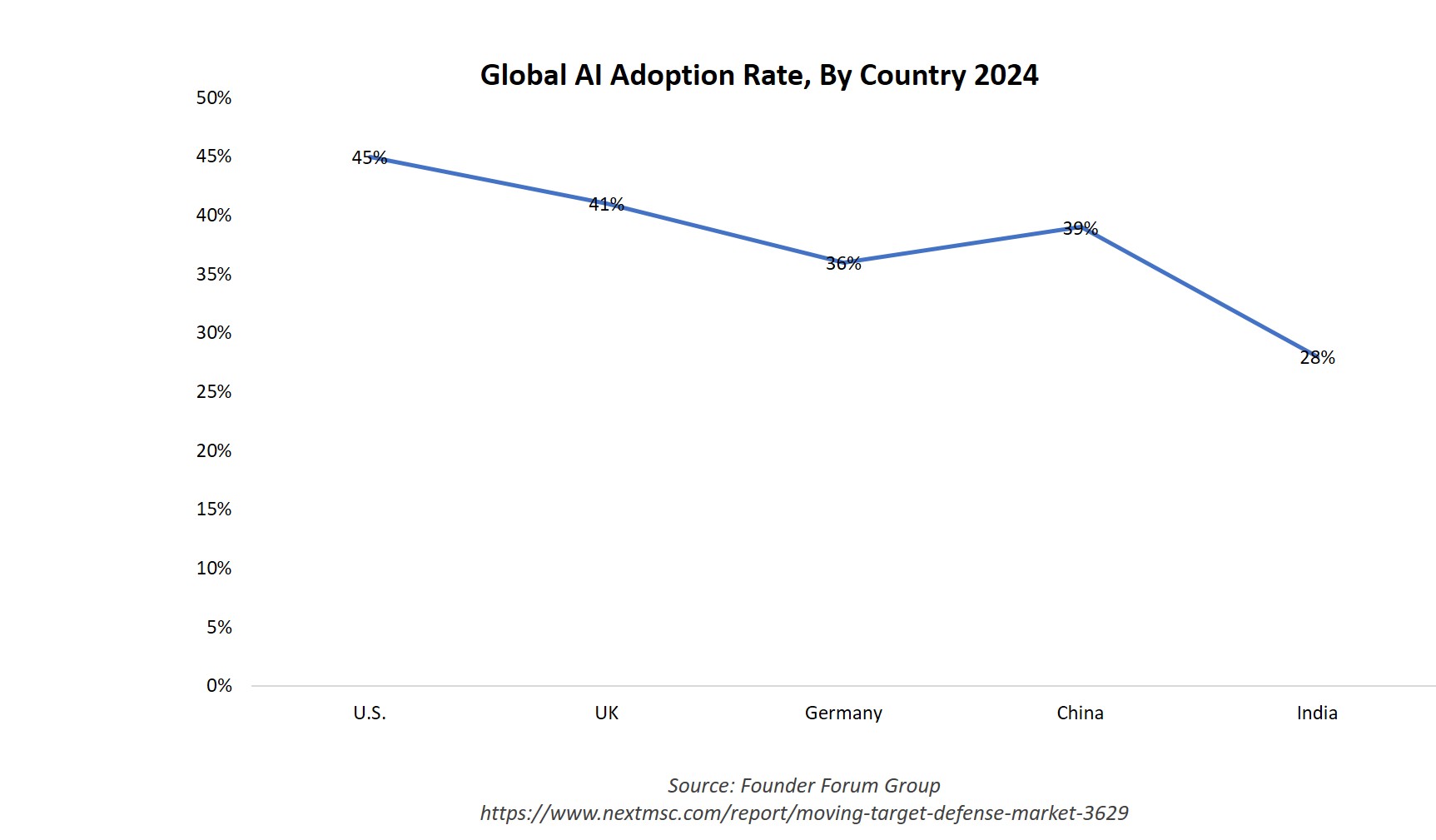
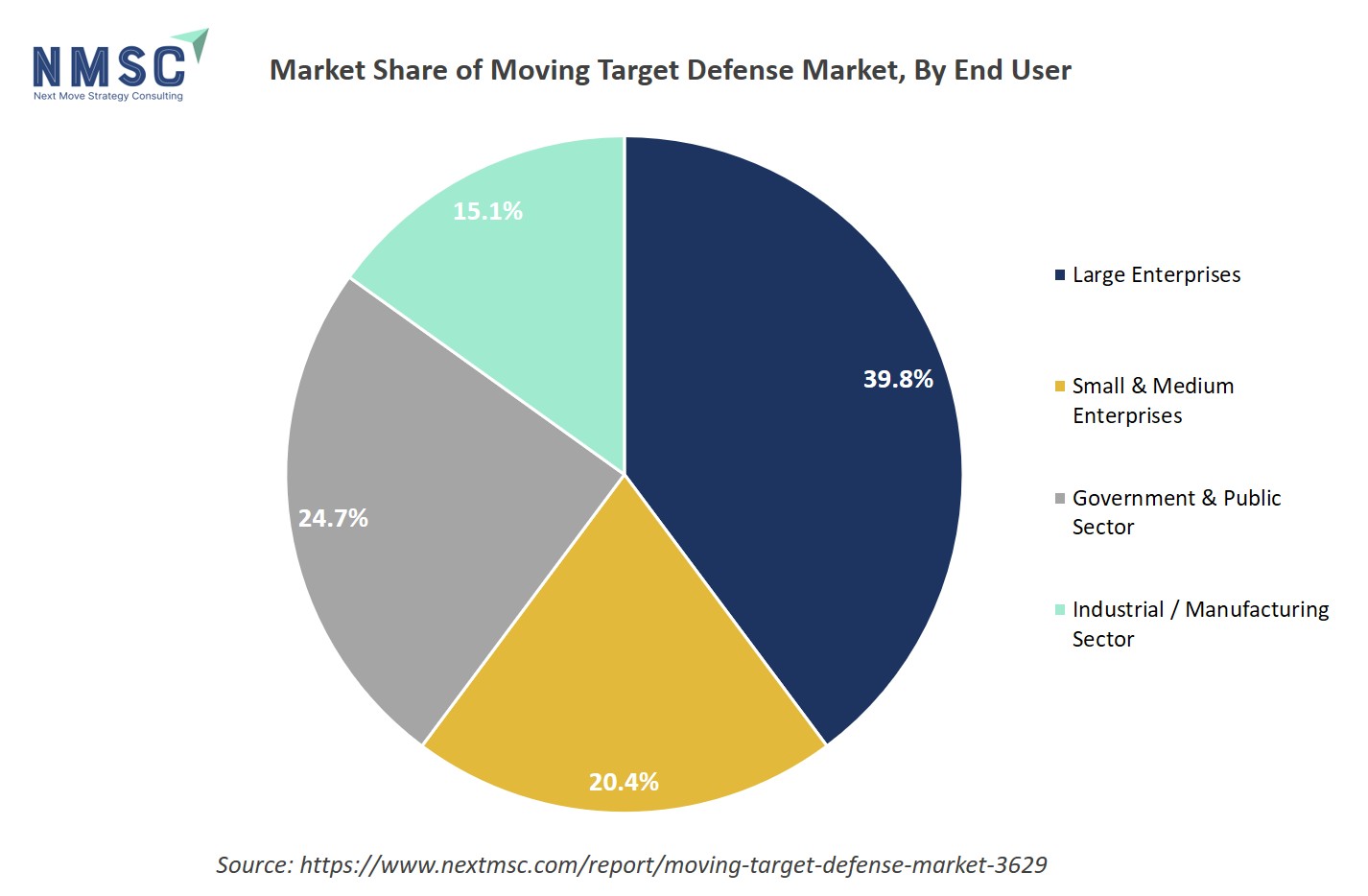
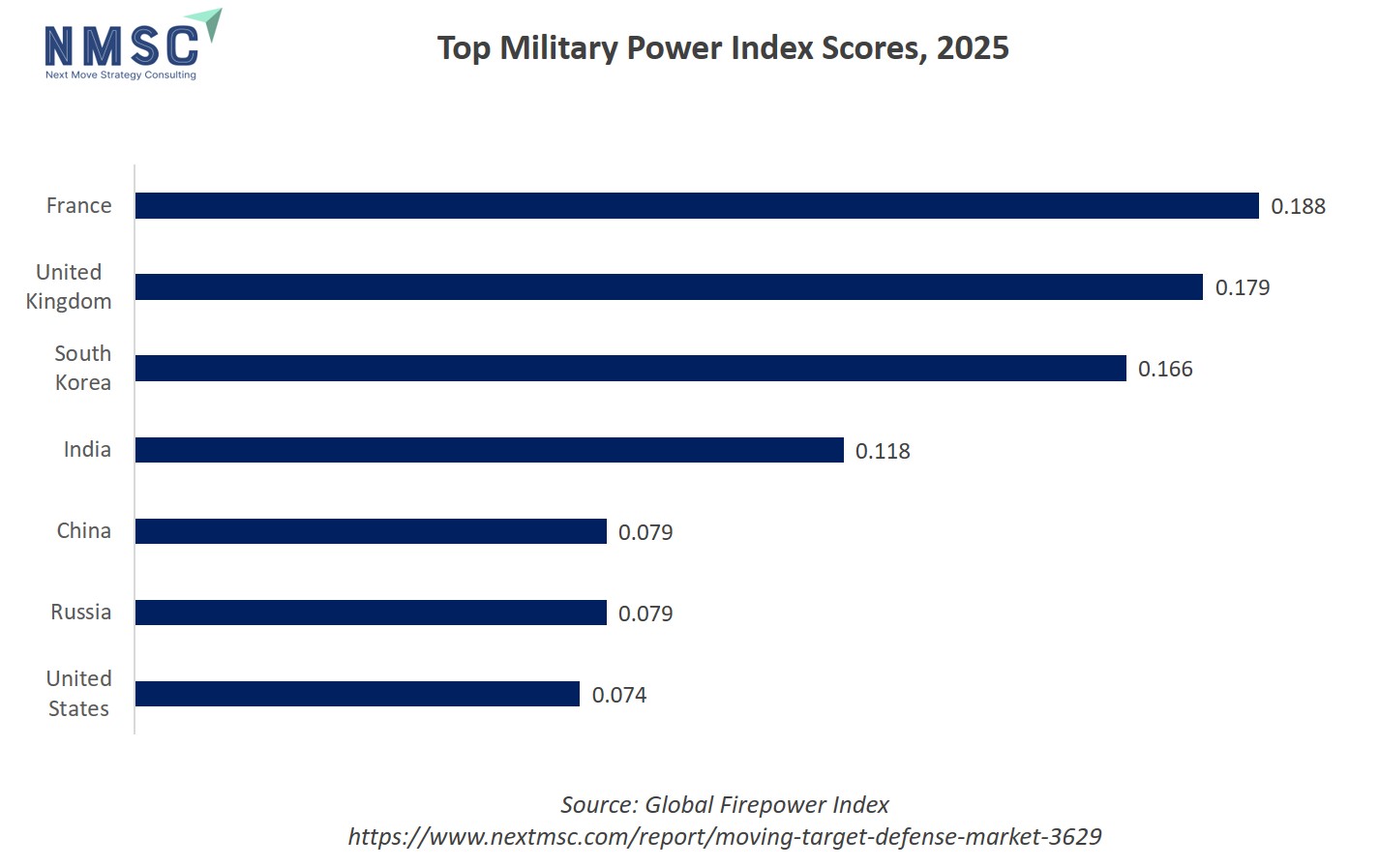

















 Speak to Our Analyst
Speak to Our Analyst



